




By Tim Clouser
With Washington state facing a shortage of a million units, House lawmakers amended a bill Friday to cut statewide parking mandates to make room for the new homes over the next two decades.
Lawmakers backed the proposal across party lines last month, passing it off the Senate floor on a 40-8 vote, with a few Republicans and Democrats dissenting. Praised by urbanists, Senate Bill 5184 would reduce parking mandated by state law to prioritize new development.
Supporters say cutting the mandate could reduce building costs and promote a more multimodal future. Each stall can add tens of thousands of dollars to a project. However, opponents emphasize a need for local control when balancing new construction with available parking.
“We’ve been working really hard over the last few years to try to find ways to make housing more affordable, and this is kind of
one of the last critical pieces,” Rep. Davina Duerr, D-Bothell, said. “I think everyone’s clear that housing people is more important than housing cars.”
The House Local Government Committee approved three amendments to SB 5184 on March 21, sending it off to the Rules Committee to schedule a floor vote.
Friday’s amendments included raising the exemption from cities with 20,000 people or fewer to 30,000 and allowing municipalities to impose limited mandates. Those include allowing localities to require at least one space per single-family home and half a spot for each multifamily unit; two parking spaces per 1,000 square feet of commercial space; additional parking beyond what SB 5184 allows for religious organizations and carpools; and allowing time-restricted parking.
Prior versions of SB 5184 limited the amount of mandated parking to half a space for any residential unit and one spot per 1,000 square feet of commercial space. Rep.
By Friends of Madison Park
Spring is in the air! The Friends of Madison Park volunteers have been hard at work planning events and advocating for our neighborhood amidst the


Victoria Hunt, D-Issaquah, said her amendment attempts to make the process easier for smaller cities to comply with.
“We need to work on making sure that our families have more options for more




We escaped late February’s wind-driven power outage by virtue of living on a luckier side of the street. When we checked Seattle. gov the morning after the storm, 18,000+ customers were out of electricity for the night. In our area, the power was out for about seven hours, seemingly typical for the city: short, temporary blackouts.
Even though we have reliable electric service (thank you, City Light), I have been mulling investing in a generator in case of longer outages, and this column seemed a good opportunity for me to explore the idea a little for myself and share what I’ve learned. I’ve written up some pros, cons, questions, and considerations, but I am far from an expert—please just use this article as a jumping-off point! I recommend consulting a reputable buyer’s guide, like Popular Mechanics or Consumer Reports, to learn more. Other resources I’ve found helpful are YouTube and Reddit (more on those later).
Aside: I’ll be talking about portable generators in this article, but if your budget allows for a large investment, you might look into having a whole-house generator (sometimes called a standby generator) professionally installed to keep your heating/air conditioning and all other systems up in a power outage. These generators rely on natural gas (practical if you already have gas in your home) or propane, and are connected directly to your electrical panel.
First things first: size matters
A key question to ask: What wattage generator do I need?
Portable generators are
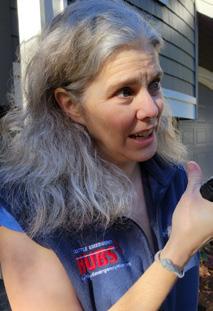
Dana Armstrong Madison Park Emergency Hub
categorized according to how many “running watts” they can produce. Per Lowe’s Generator Finder, generators under 3,000 watts will power “small appliances, phone chargers, and lights,” 3,001-6,000 watts will support “essential appliances like a fridge and multiple electronics,” and 6,001 to 10,000 watts can handle “most household heating and cooling systems, water heaters and appliances.” (For more than 10,000 watts, you’re likely looking at a whole-house setup.)
Omnicalculator.com has an easy-to-use wattage calculator (search “generator wattage”) that lets you add in all the appliances you think you will need and calculates the wattage you need.
Next: Decide what type of generator you want I’m grouping portable generators into two broad categories: Fuel-driven (using gasoline, propane, or natural gas) and solar. Fueldriven generators include an internal combustion engine that runs on fuel that you supply. Solar generator solutions use power from the sun (using solar panels) but many also let you use a “prestored” energy source (like wall outlets or your car charger).
FUEL-DRIVEN PROS: INEXPENSIVE; GOOD VALUE FOR MONEY
Fuel-driven Cons: Requires fuel; must be used outdoors; noisy; myriad safety considerations; requires regular maintenance
Solar Pros: Clean, emissions-free power; sun available during fuel shortages; lightweight; silent; low maintenance; portable; can use indoors
Solar Cons: Expensive; requires direct sunlight; slower/less powerful; components sensitive/ fragile; solar panels require positioning/moving; temperature-sensitive Fuel-driven generators— some considerations
Before I dive in, it’s vital to share that fuel-powered generators carry substantial safety risks — more than I can go into in this article. Visit Seattle City Light (bit. ly/sea-gensafe) or the Red Cross (bit.ly/rc-gensafe) for information on generator safety basics. For safety reasons, fuel-driven generators must be run outside your house (at least 20 feet in most cases), so you’ll need to keep the unit outside and use a long extension cord and a surge strip. You must have sheltered outdoor space (not just a garage), away from windows and doors, and keep the exhaust blowing away from your house. A generator-owning friend stressed that a generator-ready extension cord (weatherproof, portable, long) is also a must.
A key question to consider: What kind of fuel type(s) do I want?
Gasoline generators are the most common, inexpensive, and convenient, but more versatile options are dual-fuel (uses gasoline or propane) or even tri-fuel (uses gasoline, propane, or natural gas) generators. (I’m ignoring diesel here, but they also exist.) These can all vary widely in price, size, portability, and performance. Whichever type you consider, I’d recommend limiting your purchases to
generators with carbon monoxide safety monitors/ alarms.
Popular fuel-driven generator brands: Honda (the gold standard as far as effectiveness and quietness, but expensive); Westinghouse; Champion; Generac
Fuel type pros and cons

Gasoline Pros: Simple to own and operate; fuel easily available (and you can siphon from your own car in an emergency).
Gasoline Cons: Short shelf life (6 months+); can be noisy (as loud “as a lawnmower” in many cases); require additives be added periodically
Propane Pros: Easy to obtain and store (can last indefinitely!); comes in handy containers,
Propane Cons: Offer less power than gasoline; must store carefully and check for leaks
Natural Gas Pros: No additional costs if natural gas already installed in your house; no additional fuel costs
Natural Gas Cons: Complex/dangerous to connect/ use; might require professional installation
An inverter generator works like a standard generator, but throttles the engine for more efficiency. It costs more but has substantial advantages: it is quieter, more efficient, and offers cleaner power (good for laptops or other sensitive electronics).
Be sure you are comparing apples to apples when shopping for generators.
Solar generators—some basics
Solar power generator is kind of a misnomer—it’s more of a solar generator system with two components: 1) solar panels to collect power and 2) a battery to store power in (called a power station). One advantage of this system over fuelbased systems is that the sun is always available, and most power stations also let you store power from other sources, like wall outlets or even car chargers. However, we do live in the Northwest, where the sun can be quite shy—it’s a trade-off, to be sure!
A few things to look at when evaluating a solar power generator: power output, battery capacity and type (LiFePo4 is the latest technology), portability, charging time, and durability.
POPULAR
SYSTEMS: BLUETTI, JACKERY, ECOFLOW, ANKER
Note: You can buy plugand-play systems that include all you need, or you
can build your own solar setups that are more affordable and customizable. On YouTube, DIY Solar Power with Will Prowse has a lot of content on custom solutions (cheaper, but requires some tech savvy—good if you’ve been looking to take up a new hobby!). I also recommend the City Prepping YouTube channel. Hope you have enjoyed dabbling in generators with me this month. I have merely scratched the surface here on generators and doubtless have made some mistakes (no fact checker on this budget!). Please research thoroughly before you make any purchases!
Thanks to Reddit’s r/ realworldpreppers, r/TwoXPreppers, and r/Generator groups for inspiration and information.
As always, this column is part of Madison Park Emergency Hub’s outreach effort. We’re an all-volunteer org focused on neighbors helping each other after a disaster. Contact us at madparkhub@gmail.com with questions or to get on our mailing list. (And if you don’t want to type in all these links, please mail me for a link-filled PDF of this article!)
By Spencer Pauley
The Center Square
Between November 2024 and February 2025, the King County Regional Homelessness Authority activated its Tier 2 and Tier 3 cold weather response plans 40 times. That translates into the opening of short-term emergency shelters and the implementation of expanded emergency operations, including coordinating with cities for additional shelter sites and supporting food distribution and transportation.
Tier 2 is activated when daily high temperatures are predicted at 40 degrees Fahrenheit or below over a three-day span or snow and rain accumulate over two inches within a 24-hour period.
Tier 3 is activated when daily high temperatures are predicted at 35 degrees Fahrenheit or below for a single day or snow and rain accumulate over four inches within a 24-hour period.
In just the first two months of 2025, 23 days were spent in the
Tier 3 stage.
This winter saw more severe weather days than during a span of 63 days last summer when
KCRHA activated its severe weather response for 27 days – 43% of the time.
Throughout the 40 days of severe weather response, there were 15,400 bed nights provided in emergency shelters and 497 individuals serviced each night of activation, according to a presentation to the KCRHA Governing Committee on Thursday.
More than 8,390 meals were provided during those 40 days.
When the severe weather activation takes effect, King County’s homeless population goes to existing emergency shelters. KCRHA also expands capacity at other existing emergency shelters, stands up severe weather shelters, and utilizes King County library locations to provide warming and cooling centers.
This year, the Salvation Army in Seattle, Reclaim, the Urban League of Metropolitan Seattle,
and Mary’s Place are contracted operators of activated shelters.
For Tier 3 activation in the last four months, KCRHA added capacity to shelters across the region. This includes the Salvation Army operating four different emergency shelter locations, with a total capacity of 355 beds.
KCRHA Emergency Operations Manager Tony Machacha noted that last year the Salvation Army’s operation at Exhibition Hall in Seattle had about 320 people in one night, when maximum capacity was 140.
“We learned our lesson so we have been trying to do a lot more better capacity management,” Machacha said during the Governing Committee meeting.
Since last summer, KCRHA has worked to improve its severe weather response. The main change was centralizing its response through one center. The agency used to be run by Machacha and subregional planners, which Machacha said worked well but lacked enough efficiency.

King County Councilmember Jorge Barón successfully secured $350,000 in county funding to expand severe weather shelter beds. KCRHA is also expecting annual funding from the City of Seattle for severe weather response, which is typically around $500,000.
The North King County Interlocal agreement also includes severe weather funding.
KCRHA has also established closer collaboration with south King County cities. This includes sending $40,000 to the city of Burien for 40 more severe weather response beds.
The agency is also in development with east King County cities to establish an interlocal agreement that includes funding for severe weather as well.
By Spencer Pauley The Center Square
Seattle Mayor Bruce Harrell has announced a proposed property tax levy renewal that would increase funding for a public campaign financing voucher program by 50%.
Seattle’s Democracy Voucher Program was created and approved by voters in 2015 with the intention of increasing participation in local elections across all Seattle demographics and reducing the influence of larger donations in politics.
Eligible residents receive $25 democracy vouchers during local election cycles. These residents can then donate their vouchers to qualifying campaigns.
Harrell’s new tax proposal would increase the property tax levy from the anticipated $30 million generated between 2017-2027 to $45 million over the next 10 years starting in 2027, if approved by voters.
This would cost the median assessed value Seattle homeowner about $12.20 a year, according to a press release.
“Renewing this program shows Seattle’s commitment to ensuring that all voices – regardless of income or background – can help shape the future of our city,” Harrell said in a statement Monday.
The city claims success with the Democracy Voucher Program during its initial lifetime due to Seattle having one of highest rates of people contributing to candidates in King County, with over 106,000 residents distributing over $10 million in vouchers to local campaigns through 2024, according to the city.
Other data from the city shows that 76% of candidates who appeared on the primary election ballot and 89% of candidates on the general election ballot participated in the program between 2017 and 2024.
If voters approve the ballot measure, city officials will convene a work group in 2026 to make recommendations on how to improve the program in order to reach more residents.
Harrell’s proposal will have to first be approved by the Seattle City Council to be placed on August 2025 primary ballots.

By TJ Martinell | The Center Square
Washington drivers may be funding transit when they fill up their vehicles at the gas pump due not only to how carbon auctions under the Climate Commitment Act could be indirectly raising gas prices, but how CCA money has been appropriated by the state Legislature.
As of the most recent report by the Department of Ecology, in the fiscal year 2024 almost half of all CCA revenue spent originated from an account designated specifically for transit related projects.
One source of debate over a proposed RUC program is whether or not the revenue should be restricted to state highway projects in the same way as gas tax revenue. Some have advocated maintaining that restriction on any RUC money, while others believe it should be flexible enough to fund other transportation areas such as transit.
Under the CCA, Ecology holds quarterly carbon auctions in which emitters subject to the law must purchase carbon allowances; according to Ecology, those auctions have generated more than $2 billion in revenue so far.
Organizations like the Washington Policy Center and the Washington Farm Bureau have argued that the carbon auctions have caused gas prices to increase as a result. A former economist for the Washington State Department of Transportation claimed in 2023 that he was told by higher ups to falsify the impact of the CCA on gas prices and filed a lawsuit as a result.
Meanwhile, an analysis by The Center Square of CCA projects funded in the fiscal year 2024 found that of the top 10 most expensive projects, six of them were transit related. The most expensive CCA funded project during that time frame was also for transit; the $66 million project was to “support ongoing operations costs to maintain and provide bus service” in Seattle.
In total, $137 million or 64% of the $214 million spent on the top 10 most expensive projects
were for transit projects. That $137 million represents 30% of the $472 million in total CCA spending for the fiscal year 2024. CCA revenue is deposited into three accounts, two of which have subaccounts, respectively. The revenue is held in those accounts until the money is appropriated by the state Legislature.
Of those four subaccounts, money spent from the Climate Transit Programs Account on 115 projects constituted $213 million or 45% of all CCA project spending in the 2024 fiscal year.
According to Ecology, spending from that subaccount focuses on the following:
Transit support grants
Tribal transit mobility grants
• Transit coordination grants
• Special needs transit grants
• Bus and bus facility grant programs
• Green transit grants

• Transportation demand management grants
• Other transit projects identified in an omnibus transportation appropriations act
The Center Square recently reported that although the CCA’s primary objective is to reduce carbon emissions, almost 90% of total project spending in the 2024 fiscal year involved no emission reductions,
and those that did reduced total state emissions by .3% “over time.” Of the top 10 most expensive projects, only two were reported to reduce emissions. Of those two projects, only one reported actual emission reduction; that $9.7 million project converted three Jumbo Mark II ferry vessels to hybrid-electric, reducing emissions by 6,510 metric tons.

What can we do when life upsets us? Take time to notice how often you are upset during the day. You’ll likely see that usually it’s because life upended your expectations. Therapist and author Christine Hassler calls this an “expectation hangover” – the frustration and internal pushback we experience in disappointment. It might be something small, like the café is out of your favorite coffee, or something more challenging.
Some of the ways we respond include getting annoyed or angry, complaining, or spending time trying to fix the situation, i.e., force today’s round peg into your square vision. That doesn’t usually go well. Let’s say you misplace your keys, spending precious minutes locating them, all the while saying to yourself, “I can’t believe this is happening, I’m going to be late, I can just hear my boss’ reaction, etc.” before running out the door in a huff. That’s when you forget your laptop or slam your finger in the car door. “That’s just my luck,” you mutter as you drive off. At work you tell co-workers, “You won’t believe the day I’ve had,” rehashing all the ways that life has done you wrong today.
The brain is constantly seeking efficiencies to help us streamline the millions of functions and thoughts in day. Both the reticular activating system, which notices patterns, and the amygdala (the fear processing center) latch on to what you notice. If you are telling yourself — whether verbally, silently or somatically through body signals like tension — that life is a struggle, your brain will help you notice more correlating information. The amygdala, with a negative bias meant to keep you safe, lights up when you think fearful thoughts or predict chaos and catastrophe.
In the car keys scenario above you are doing both, creating a feedback loop that keeps you in a very bad mood while paying more attention to things that reinforce that mood – a coworker you don’t get along with, the weather, and so on.
My youngest sister in New York City is a high school teacher – an award-winning one, at an alternative school for teenagers and young adults who weren’t served by the conventional system. Her students’ lives come with lots of challenges. Her coffee mug reads, “Keep Calm



Erica Browne Grivas Your Best LIfe
and Pretend it’s On the Lesson Plan.”
I think this may be the answer to handling life’s curve balls. Predicting them is unlikely, obliterating them is impossible, so let’s roll with them with as much grace as we can muster.
The number of potential annoyances, disappointments or mental derailments we can experience is infinite. The Buddha’s famous saying, “Life is suffering,” sounded depressing and fatalist the first time I heard it. Who wants suffering to be the meaning of life? I’m no expert about Buddhism, but I think he meant that suffering is as much a part of life as breathing.
The world is a dynamic system, always changing, and humans are always looking for preferences to help game the system and make it “just right.” We love routines, comfort, predictability – they feel safe, calming, and they enable us to more efficiently explore creativity and learning. Ironically, the learning creates new preferences, we become habituated to that learned system, and so it goes.
Sometimes with the perspective of time, we see our challenges have helped us, led us to places we’d never imagined. You’ve probably heard someone say on a meme or podcast that they learned to say, “life isn’t happening to me, it’s happening for me.”
That’s not always easy to do as frustration builds in your chest. It may feel performative at first, like an affirmation. Big challenges usually come with learnings. Little challenges, less so. It’s possible that somehow that challenge would have helped you somehow - maybe leaving five minutes late you avoided an accident on your route, or your favorite sandwich would have had bad lettuce on it. We can’t always know if the challenge will prove to be helpful later. But try saying things to yourself like, “It’s going to be fine,” “I’ve got this,” or “This won’t matter to me in five years.”
That can short-circuit the negative feedback loop in the moment –which is a miracle not to be underestimate. At the very least it feels better than continuing the negativity. That alone can improve your day – and maybe that of all the people you meet too.
From page 1
housing in our communities where they work,” Hunt said. “At the same time, local elected officials need tools to actually implement these policies, and my amendment tries to find a balance in that.”Hunt’s change included reducing the exemption for commercial spaces from 5,000 square feet and under to 3,000, allowing municipalities to apply for a variance if SB 5184 creates safety
From page 1
representatives. Feedback (pro, con or neutral) is much appreciated, so please submit opinions in writing to City Council representative Joy Hollingsworth, the Office of Planning and Community Development, and/or the Mayor’s Office. Visit the Friends of Madison Park website for email templates and more information on how to make your voice heard.
Spring Clean Day: Please join us on Saturday, May 3, from 9 a.m. until noon to help clean and beautify our community spaces. Check-in at the Bank of America parking lot, and though some tools will be available, volunteers are welcome to

bring along their own as well.
Garden tour: Mark your calendars for Saturday, June 7 from 10 a.m. to 3 p.m. for Madison Park’s annual garden tour! Prepare to be inspired as neighbors have generously opened their yards and await this opportunity to showcase landscaping and flora. Tickets are $20 per guest, and can be purchased online at www.friendsofmadisonpark.com. Proceeds benefit the Friends of Madison Park.
Subscribe to the Friends of Madison Park newsletter for updated information on neighborhood happenings, and please attend the next community meeting on Tuesday, May 6 at 7 p.m. at the bathhouse. We look forward to seeing you there.
SATURDAY, JUNE 7 / 1 0AM-3PM

concerns, and extending the implementation timeline.
As amended, the bill allows municipalities with 100,000 residents or more at least 18 months to adjust their parking standards, and those under that threshold up to three years.
“Reducing parking minimums doesn’t eliminate parking,” Ryan Donohue, representing Habitat for Humanity, testified on March 14. “It simply allows us to determine when and where how much parking
needs to be built based on the actual demand and the community needs.”
Earlier this month, Nicholas Carr, senior policy advisor on housing to Gov. Bob Ferguson, told the committee that each parking stall could cost up to $60,000 to $70,000. He called SB 5184 “a real opportunity for savings.”
Carl Schroeder, representing the Association of Washington Cities, criticized SB 5184 during the March 14 public hearing.
“Who should make decisions about what happens
and the impacts thereof,” Schroeder testified. “Do we value the input of impacted citizens through the local democratic process, or do we think that they don’t know what’s best for them?”
Rep. Mark Klicker, RWalla Walla, attributed his party’s split vote on Friday to concerns across eastern Washington. The committee advanced SB 5184 with a 5-2 vote, citing the auto-centric nature of the region, which is much more spread out than the western half of the state.
According to World Population Review, SB 5184 would apply to 45 of Washington’s 281 cities, with at least nine located in the eastern half of the state. Spokane, the second most populous city in the state after Seattle, eliminated its parking requirements last year.
“Even with cities larger than the 30,000, Eastern Washington is very auto-centric,” Klicker said. “There’s a lot of traveling, and many people have two or three or more cars to get around.”
Grade school at J.J. McGilvra in Madison Park brought together a tapestry of diverse backgrounds and lifestyles. Some kids wore the latest fashions and arrived in shiny cars with chauffeurs who graciously opened the doors, while many others sported carefully mended hand-medowns with patches and walked several blocks each day.
The playground resonated with the laughter and chatter of children. Our differences brought us together as we recognized that World War II had impacted us all. During recess, lunchtime, and even after school, the boys played marbles around the large trees behind the school, with many of the faculty cheering us on. The girls delighted in playing with their “Storybook Dolls.” Eventually, we all participated in baseball and dodgeball.
At Edmund Meany Jr. High School, there were students from all cultures who played football, basketball, and baseball while cheerleaders refined their skills. These activities led to the formation of cliques, including jocks, geeks, musicians, brains, stoners, popular kids, loners, rich kids, snobs,
smokers, and others.
As we entered adulthood, many of us embraced parties and various social gatherings that involved alcohol. During those years, we developed a passion for cars: hot rods, custom vehicles, and even hand-me-down classic Ramblers (like the one my wife, Karen, drove). We chopped and channeled ‘32 Ford and Chevy Coupes, all fitted with fenders. In the early ‘50s, Shucks Auto opened numerous stores in the area selling dual carbs, Smitty Mufflers, and fender skirts – everything to make your ride stand out. But who needs fenders when you’ve got dual pipes? The real question was where to showcase these beauties after hours of hard work. Any drive-in restaurant would do just fine.
Many of us from Madison Park gathered at the High Sea Drive-In on 19th and Madison, at Johnny’s Prime Burgers on Olive and 10th (which disappeared due to the freeway expansion), and at the Triplex on Rainier in Bellevue and Renton. The police sipped coffee in the front rows while we lined up in the back to enjoy beer, whiskey, and coffee. Johnny’s was the hub for those too young to enter
taverns and a popular spot for car enthusiasts. Whether it was custom hot rods or our parents’ cars, it didn’t matter. Johnny’s was where we reunited with the rest of the gang after a movie. Stylish carhops on roller skates served food and drinks –what more could you ask for?
For pure excitement, we sped through the I-90 tunnel with a lookout clearing the way, racing to hear our engines roar; parking and speeding tickets hung from the dashboard mirror like badges of honor.
We cruised through downtown, and there were no one-way streets back then. The streets were so wide that you could easily stop to chat with people from your car, leaving plenty of room for others to pass by.
The Army was definitely a clique, but it lacked the glamour that $110 a month would allow. In 1957, I was drafted to Fort Ord, California, (combat engineering) for ten weeks of basic training, during which rumors circulated about a potential deployment to Vietnam or Korea. After that, I completed several more weeks of training at Fort Leonard Wood, Missouri. Delighted to return to the milder weather, I was
will explore ways to:
Seattle Center and Pacific Science Center (PacSci) announced a bold new partnership to advance PacSci’s mission and financial stability, preserve and expand public space, and establish new programming, including a Maker & Innovation Lab for STEM education and creative exploration.
“For decades, Seattle Center and the Pacific Science Center have been pillars of our city’s cultural fabric and innovative spirit. On these campuses curiosity is sparked, community is built, and history is honored by residents and visitors alike,” said Mayor Bruce Harrell. “This new partnership will strengthen both institutions, and ensure that together, Seattle Center and the Pacific Science Center can serve, inspire, and educate all Seattleites for generations to come. In Seattle, our progress is driven through collaboration, and I am excited to see how this enhanced partnership enriches our city and the region.”
Through this partnership, Seattle Center and PacSci
■ Preserve and enhance PacSci’s historic courtyards and arches.
■ Make the courtyard accessible to the public from Seattle Center by removing the north kiosks and gates and creating new public connections to Seattle Center from Belltown.
■ Strengthen PacSci’s mission impact and financial sustainability by exploring additional programming and development on PacSci’s campus while preserving key historic elements.
■ Develop a new Maker & Innovation Lab at PacSci that will serve as a community hub for STEM education and creative exploration.
“Pacific Science Center has been an iconic destination since the 1962 World’s Fair.
This partnership represents an exciting opportunity for our two organizations to formally partner for the first time – with the goal of strengthening PacSci, preserving the historic courtyard and arches, and integrating our two campuses as one public place, open to all,” said Marshall Foster, Director of Seattle Center.
assigned to communications at Fort Ord, a role intended for enlisted personnel, not draftees or infantry.
Word spread that I had drawing skills, and suddenly, I was designing training areas and art projects for officers. I even had the chance to learn photography. My sarcasm and humor appeared in a comic strip for the Fort Ord Panorama newspaper called Aces Corner.
Next, was the stress of the work environment creating a need for a group to relieve it. In comes Rosellini’s Four10 to save the day. It featured a popular happy hour on Friday nights, where the staff at Victor Rosellini ‘s greeted everyone by name, making them feel like royalty. Other Madison Park residents could often be found here and other latenight spots.
When local venues closed, after-hours clubs attracted those high on life. There were hotspots stretching from Pike to Boren to First, where one could enjoy delicious food, drinks, dancing, and even a fistfight – all for under $5. Crowds flocked to Chinatown, where many clubs stayed open until 5 a.m. We had Waimei, Bob Kiva’s 610, the Black and Tan, Silver Dragon, China

Pheasant, Textile and Apparel Club, and Ebony, which remained open until 7 a.m.
One of the guys in my group would say, “The R.O., Friday at 10:15 pm!” No matter where you were – at the Four-10 or any other hotspot – you’d do a low crawl to the exit at 9:40 to get to the Red Onion, always keeping it to yourself and pretending you had other plans. It was crucial to protect our large singles neighborhood from outsiders. The Red Onion and the Attic taverns were well-kept secrets from both the office crowd and the downtown socialites, yet they attracted packed crowds most Friday nights. Back then, single women included flight attendants, secretaries, students, and office workers. The men in our group held professional positions, and some worked blue-collar jobs.
Here come the groups of the 1970s: hippies, yippies,
yuppies, disco dancers, protesters, and more. Pike Place Market, particularly Place Pigalle and the Mexican restaurant below Matt’s in the Market, owned by a woman named Krugerrand, were popular hangouts for the hippie crowd, much like the Blue Moon in the university district. Anti-hippie types preferred the Deluxe Tavern on Capitol Hill, while disco thrived at places like Parkers, Shelly’s Leg, and Pier 70, the Zoo.
On Saturday mornings, large groups of friends would gather at the market to plan dinner, split items for a feast (including drinks along the way), return to my house to cook with plenty of good wine, and finally dine on the front lawn, sitting cross-legged around a large walnut coffee table we brought in from the living room. Karen and I met during this time and cherish those days as some of the best in our 45 years of marriage.
“By opening up public access, strengthening PacSci’s long-term sustainability, and adding new experiences like the Makerspace, we’re creating even more opportunities for visitors to engage, learn, and explore.”
“Pacific Science Center is delighted to be a neighbor of Seattle Center. This partnership represents a much deeper level of collaboration,” said Will Daugherty, President & CEO of PacSci. “By working together with Seattle Center and the City, we are creating new opportunities to expand our reach, welcome more of the public into our space, and ensure a sustainable future for PacSci and the communities we serve.”
Seattle Center is a department of the City of Seattle, responsible for managing the 74-acre Seattle Center campus. While PacSci is located adjacent to Seattle Center’s campus, PacSci owns its land and buildings outright, with full responsibility for its operations. This new partnership represents a more integrated approach to ensuring PacSci’s long-term success.


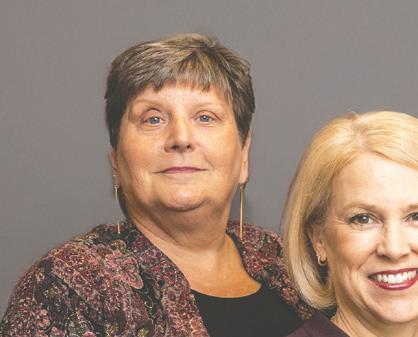







By TJ Martinell
Although the 2021 Climate Commitment Act’s primary goal is to reduce carbon emissions, supporters defending it against a failed initiative last year argued the revenue generated by it was vital to support air quality projects.
However, an analysis of CCA money spent from an account specifically meant for those projects found it made up roughly .1% of the total spending for the 2024 fiscal year.
CCA revenue is deposited into three main accounts, with two of those accounts having two subaccounts each. Among them is the Air Quality & Health Disparities Improvement Account, the funds of which are “to be used for projects that result in long-term environmental benefits and increased resilience to the impacts of climate change such as improving air quality through the reduction of criteria pollutants and reducing health disparities in overburdened

communities by improving health outcomes through the reduction or elimination of environmental harms and the promotion of environmental benefits.”
The Washington State Department of Ecology reported in November that $472 million of CCA funds were spent during the fiscal year 2024. Of that, .1%, or $596,000, came from the air quality account for two projects.
Those two projects were to “reduce criteria air pollutant emissions in overburdened communities highly impacted by air pollution” and for the monitoring of ultra-fine particles by the Puget Sound Clean Air Agency.
In total $21.8 million, or .64%, of the $3.3 billion in CCA revenue appropriated for the 2023-25 biennium came from the air quality account, all of which is directed

at the two projects, while there were more than 1,000 projects allocated CCA money for the same time period. Meanwhile, roughly 89% of project spending in fiscal year 2024 did not have any impact to carbon emissions, while 45% of the spending was on transit related projects.
According to Ecology, the agency is working on improving air quality in 16 Washington communities that are “historically overburdened with health, social, and environmental inequities and are highly impacted by criteria air pollution, such as ozone and fine particles.” The state agency reports that those communities are a combination of urban, suburban, and rural and range from populations of 1,500 to more than 200,000 residents. Altogether, the 16 communities have 1.2 million people, 15.5% of the state’s total population.
The CCA will also be funding a $10 million grant program to support local projects aimed at reducing air quality, with qualified applicants including tribes and local governments.
According to Ecology, all of Washington, except a small area in
Whatcom County, currently meets air quality standards.
However, Washington Policy Center’s Vice President of Research Todd Myers told The Center Square he’s skeptical more CCA spending would have an effect; he noted in 2019 that an Ecology study cited by the Puget Sound Clean Air Agency found a proposed low carbon fuel standard wouldn’t have an effect on air quality, as it is projected to improve regardless.
“Air quality is getting much better,” he said. “Transportation has a relatively low impact on air quality. When we miss air quality targets, it’s never because of traffic and smog. It’s because of wood burning stoves.”
Ecology oversees the Wood Smoke Reduction Grant Program, which provides funding for the transition of homes reliant on wood burning stoves to either natural gas or electricity. In place for 17 years, the state Legislature typically allocates $3 to $4 million for the program, which has replaced more than 7,000 wood stoves. The revenue for the grant program comes from the Model Toxics Control Act Capital Account.





By
Recently, the Washington State Legislature enacted a Clean Fuel Standard program, which directs fuel providers to reduce the carbon intensity in their products such as gasoline and diesel. Now, the original bill sponsor for that program wants to modify it in a way that supporters believe will improve implementation.
However, some opposed to Second Substitute House Bill 1409 say it’s a sign the program itself is fundamentally flawed and should be scrapped.
“It’s only in the second year of implementation, and yet, even supporters admit that it has already deeply flawed,” Washington Policy Center Vice President of Research Todd Myers said during a Wednesday morning Senate Environment, Energy & Technology Committee public hearing. “The Clean Fuel Standard should not be fixed, it should be eliminated.”
The Clean Fuel Standard law requires fuel suppliers to reduce
the carbon intensity of transportation fuels so that they are 20% below 2017 levels by 2034. Several pathways towards complying with the law are providing or blending biofuels into their own fuel, or purchasing credits generated by fuel providers whose product is below the thresholds, which can include entities that own and operate electric vehicle charging stations.
The program is the result of repeated legislative efforts to get a low carbon fuel standard imposed, with backers finally achieving success in 2021.
SSHB 1409’s sponsor Rep. Joe Fitzgibbon, D-Seattle, told the Environment, Energy & Technology Committee that “this program would benefit from a more tailored enforcement structure rather than relying on the existing Clean Air Act enforcement structure, which includes criminal penalties. I don’t think we ever want to have criminal penalties be applied for the enforcement of this program.”
Aside from removing criminal

By MetroCreative
Few breakfasts are as beloved as French toast, a dish so hearty and fulfilling that many people enjoy it for dinner. Though traditional French toast is very popular, the traditional recipe can be altered to make the dish even more delightful. Such is the case with the following recipe for “Panettone French Toast With Caramelized Apples” from Norman Kolpas’ “Buongiorno!” (Contemporary Books).
PANETTONE FRENCH TOAST
WITH CARAMELIZED APPLES
Serves 4
■ ¼ cup slivered almonds
■ Caramelized Apples
■ 2 tablespoons unsalted butter
■ 2 Golden Delicious or Granny Smith apples, peeled, cored and cut
From page 6
penalties, the bill requires that carbon intensity in transportation fuels be reduced by 45% below 2017 levels by Jan. 1, 2038. It also requires the state Department of Ecology to publish an analysis and forecast of the program’s credit market.
Speaking in favor of the bill was Logan Bahr with Tacoma Public Utilities. He told the committee that “Washington is on a bold path to decarbonize its transportation sector and a well-functioning clean fuels program is essential to ensuring the
From page 5
“This exciting partnership is a momentous step forward for the Pacific Science Center,” said Jembaa Mai, incoming Chair of the Board of PacSci. “Joining forces with Seattle Center will support our growth and our bold vision
into 1/2-inch thick wedges
■ ¼ cup apple juice
■ 3 tablespoons honey
■ Pinch of freshly grated nutmeg
■ Panettone French Toast
■ 2 extra-large eggs, lightly beaten
■ ½ cup low-fat milk
■ 1 tablespoon sugar
■ ½ teaspoon almond extract
■ 8 3/4-inch thick slices panettone or egg bread
■ 4 tablespoons unsalted butter
Preheat the oven to 325 F. Put the almonds in a baking dish and toast in the oven until golden, about 5 to 7 minutes. Reduce the oven temperate to 200 F.
For the caramelized apples, melt the butter in a nonstick skillet over medium heat. Add the apples and saute until lightly browned, about 5 minutes. Add the apple juice, honey and nutmeg and continue cooking,
reliable investments needed to realize this transformation.”
He added that the bill “accomplishes this by stabilizing credit prices and giving utilities like ours the certainty to move forward with critical projects.”
While concerns were raised about the impact of the bill on gas prices, Leah Missik with Climate Solutions said, “I actually think this will help put some downward pressure on prices overall. it spurs these reinvestments in opening access to cleaner fuels that actually cost people less over the long run in a way that doesn’t draw on
to explore new ways to ignite curiosity.” Center and PacSci have signed a Letter of Intent which outlines key actions both parties will take over the coming months as part of this new partnership. Both are committed to working closely with stakeholders, city leaders, and the community to shape the future of this
You can’t put the skin back on the chicken
They say death comes in threes. A crazy superstition, one of those fallacies that has no grounding in truth but you secretly believe it anyway.
Because I have been waiting for the third shoe to drop, waiting since I lost my nephew last year, and my dad a few months later. And when I say “drop,” I mean it fell from the sky with all the weight and intensity of a meteor landing.
This next paragraph comes from the saddest part of me, so I will choose my words carefully; make it short: My sister tripped, fell, hit her head on a glass coffee table, and that was it. The realization sinks in slowly.
It’s the beginning of spring, the most beautiful time of the year, so that’s all I’m going to say about my sister’s tumble. (That word just rushed in, I can’t help it. The reality of how quickly everything can tumble down roosts on every bone of my ribcage.)

trying to fill something other than hunger (I mean, how many chickens does it take to fill the human heart?), you can’t unrealize it. You can’t put the skin back on the chicken.
When I admit to my friend Murphey that I’ve also spent a bundle on new clothes since hearing the news, she says, “It happens.” Those two words ingrained not just my love of Murphey but my need for her at a time like this. And because I receive so much comfort from friends (not from chicken, not from new clothes) and even more from nature, I’m grateful that comfort is everywhere you look on this island. All you have to do is let it in. Like air.
stirring frequently, until the apples are tender and a thick, caramel-like sauce has formed. Cover and keep warm.
To make the French toast, stir together the eggs, milk, sugar, and almond extract in a wide, shallow bowl or baking dish. Add the bread slices to the mixture, turning to coat them evenly on both sides and then leaving them to soak.
Meanwhile, melt half of the butter in another nonstick skillet over medium heat. Add half of the bread slices and cook them until golden brown, about 4 to 5 minutes per side.
Transfer them to a baking dish, cover with aluminum foil, and put in the oven to keep warm. Melt the remaining butter in the skillet and cook the remaining French toast. Serve topped with the caramelized apples and garnished with the toasted almonds.
the state budget. And it helps with compliance.”
However, Jeff pack Washington with Citizens Against Unfair Taxes spoke against the bill, saying that as a farmer and contractor “I used to pay $2 a gallon for farm diesel. Now I pay $4.29. We voted this stuff down and yet you folks did it anyways.”
He added that he’s having “injectors regularly … replaced because of the lower quality of the fuel.”
SSHB 1409 originally passed in the House on March 10 54-41 vote. It is not currently scheduled for any further committee action.
project. Additional details will be shared as work progresses. For more information, contact Jayme Stocker, Seattle Center at jayme.stocker@seattle.gov or 206.507.5353 and/or Brian Knollenberg, Pacific Science Center at bknollenberg@pacsci.org or 206.360.8866.
I wish I had more faith that everything happens for a reason. I’ve felt the pull of it at times, like when lying on my back at Manitou Beach. It’s an all-over everything-is-rightwith-the-world feeling, the exact opposite of tension. It faded as soon as a man arrived with a dog that chased—that he let chase—a heron. My faith (if that dog had been leashed) would be this beach at low tide when the mudflats exhale that strong, briny smell. It helps me to cope.
So here I am, coping. I take another walk, speak when spoken to, feign interest in the news. I tell the owner of an Elon Musk truck how ugly I think his vehicle is, not to mention how ugly a man is who fathers fourteen kids by different women, not one of them his wife. And this is suddenly okay because he is so rich? I said. And that’s all I remember about that wine tasting, at which I got drunk. And that is why I buy a rotisserie chicken. And all that crispy skin, I stuff it into my mouth. I can hardly remember a version of myself that was allowed to eat the skin but I am nothing but a real pig these days. My phone rings, but I am too busy to answer it. Too busy remembering how my sister and I used to fight over the wishbone. She liked to dry them out, display them. I liked to pull them apart and make a wish right then and there.
Pronto!
I’m very pronto about many things. So said my sister. So say my friends. And difinitely my husband.
Actually, I’m surprised that I can stomach chicken at all. I’d been led to believe that grief reduces the appetite. Not so. And once you realize the connection between food and
We did have our squabbles, though, my sister and I. I remember one exchange went something like, “You aren’t making enough money,” she said. She was an accountant. She related everything to money.
“I make enough,” I say.
“You are fooling yourself,” she says.
“Am I?” This didn’t temp her to answer my question. She wasn’t born to discuss value in terms of passion. She charged by 15-minute increment. Plus, and I don’t want to say this unkindly, she was the oldest of three sisters and liked to boss us around. Boss our parents around. She liked to be the boss, had to be the boss, which made her even bossier.
“You are so immature,” she said.
“F*** off,” I said, and hung up.
That was one of our last conversations.
I live with this.
Oh god, I can’t end here . . . so I won’t.
Recently, a reader of this column called me a polymath. I had to look it up. It sounded like a mix of things I don’t like: polyester and math? You can forget about math. Turns out, she thinks I am aware.
And that’s the word I think of now.
I am more aware since losing my sister. Aware that sometimes you tumble and fall and you do not bump your head, you do not die, and you have to be grateful for this. You have to express gratefulness for this.
Mary Lou Sanelli’s latest title is In So Many Words, nominated for a 2025 Washington State Book Award. She works as a writer, speaker, and master dance teacher. For more information visit www. marylousanelli.com.





















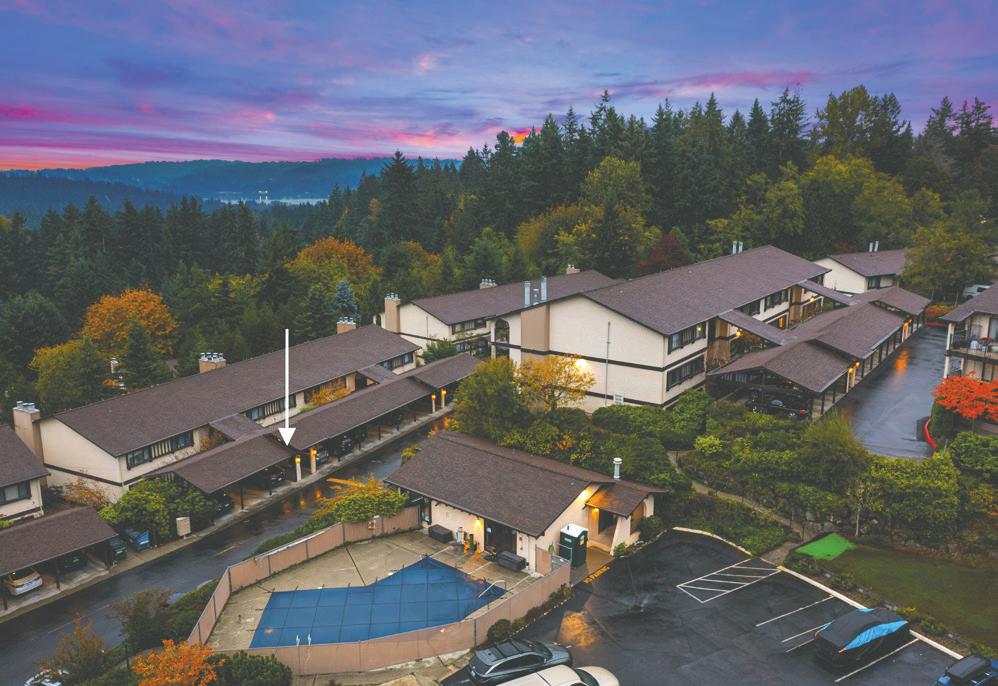
As the first day of spring blooms across our beautiful community, it's the perfect time to take stock of the Madison Park real estate market and how it compares to last year. With the first quarter of 2025 nearly behind us, homeowners and buyers alike are eager to see how the market is shaping up — especially with a new administration in place, which often sparks curiosity about potential shifts in the housing landscape.

A LOOK AT THE BROADER MARKET
According to the latest Northwest Multiple Listing Service data, there has been a 39.4% increase in total properties listed for sale year-over-year.
As of the end of February 2025, there were 10,448 active listings, a substantial rise from 7,495 in February 2024. Month-over-month, active inventory saw a slight 2% uptick, climbing from 10,241 in January 2025.
MADISON PARK AND SURROUNDING NEIGHBORHOODS
For a more localized perspective, my analysis includes Madison Park, Washington Park, Broadmoor, Denny Blaine,
TURNURE, 6








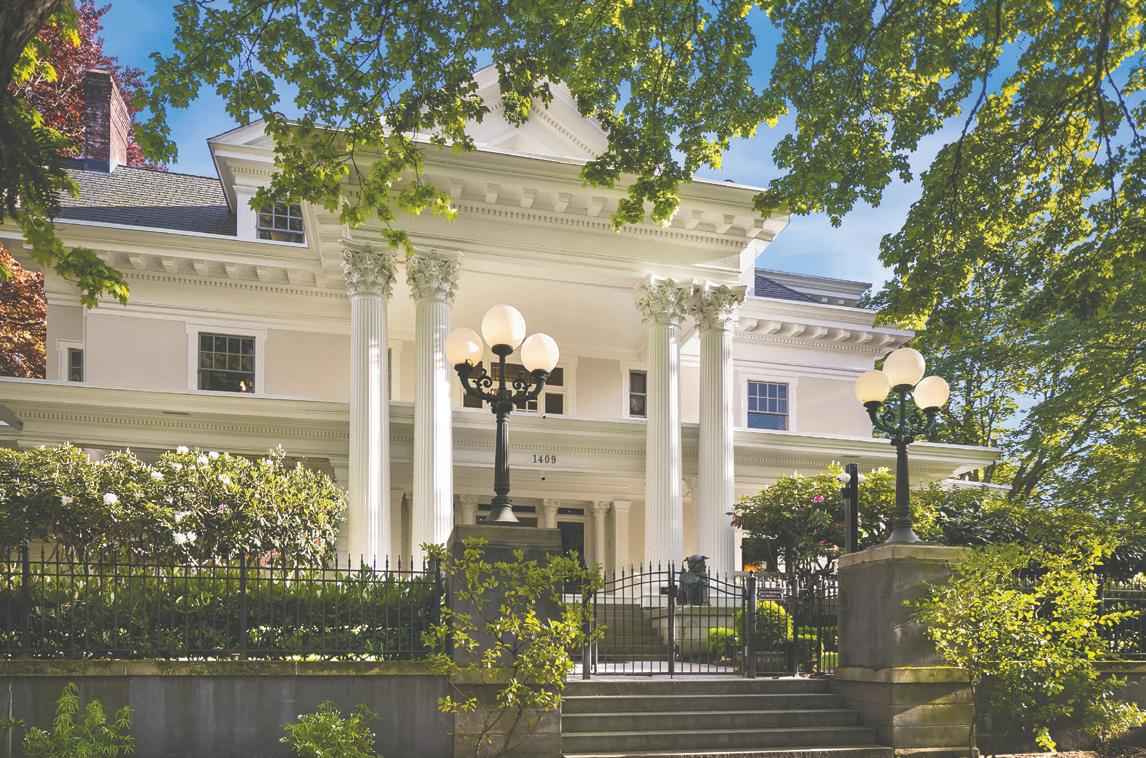














By Tim Clouser
The Center Square
Deemed necessary to implement the budget, Washington state lawmakers heard testimony on a bill on Wednesday that would close two rehabilitation centers to save $58.8 million per biennium.
The cutoff to advance bills out of the house of origin was last week. However, with a massive shortfall looming overhead, either chamber can advance proposals necessary to implement the budget. The House Early Learning & Human Services Committee picked one up on Wednesday.
If approved, House Bill 1472 would close Rainier School and Yakima Valley School, two residential habilitation centers in Buckley and Selah. The facilities provide care and services to people with developmental disabilities, who the state would have to relocate under HB 1472.
Shawn Latham, policy coordinator for Self Advocates in Leadership, said his parents were told to put him in a similar facility because his “life would not be great.” They refused, allowing him to graduate college, which led to several offers from the Developmental Disability Administration.
“In this time of an economic slowdown,” Latham testified, “now is the time to close institutions like Rainier and Yakima Valley.”
He said the cost per person each day at one of these facilities ranges from $1,400 to $2,100, while those in adult family homes cost $177, with supported living at $625. Latham argued that HB 1472 is fiscally responsible and would lead to more meaningful lives.
According to a fiscal note, HB 1472 would reduce operating expenses by about $58.8 million per biennium if both closed.

Relocating the current patients and keeping the facilities available for future use would offset some of that, with net savings of roughly $38 million per biennium.
Democrats estimate a $12 billion revenue shortfall in the coming years, while Republicans argue the figure is closer to $6.7 billion. Proposals like HB 1472, which cut services to save money or create new taxes, are among the top priorities.
Committee staff said Rainier School currently supports 81 residents, with Yakima Valley School caring for 49 others. Both underwent reductions in recent years, with two of the three programs in Buckley shuttering since 2019. Selah stopped accepting new residents in 2017.
Several parents testified Wednesday on refusing to institutionalize their children.
“Last night, I picked him up from band practice, and I never thought we would be, 10 years later, where we are today,” Krista Milhofer testified regarding her son. “I am
so grateful that I didn’t make that choice, and I wish that choice wasn’t an option or even offered to me.”
Chloe Marino, an attorney with Disability Rights Washington, called Rainier School a “dangerous place.” While currently supporting 81 people, the facility peaked at over 1,900 residents in 1958; Marino attributed this to several issues, including a failure to meet health and safety standards.
She cited instances of residents who died due to lack of supervision and inadequate medical care and others sexually assaulted by staff. Marino said these happen regularly and called HB 1472 an opportunity “to live free from abuse and neglect.”
Nicole Gomez, with the Washington Federation of State Employees, testified against HB 1472.
“What I saw told a different story,” Gomez said regarding her first visit to Rainier School.
She met staff who spent decades caring for
the residents, arguing that she saw “specialized medical care” that many wouldn’t receive otherwise. Gomez cited one resident previously placed in a community facility that couldn’t meet his needs and later wandered into the wrong home.
The situation escalated into a dangerous police encounter before he ultimately returned to Rainier School.
According to The News Tribune, Rainier School employs 460 full-time employees in a town of only 5,114 people. It’s the largest employer in the town, having opened in 1939, and a staple of the community to many who live in Buckley, posting signs that read “SAVE RAINIER SCHOOL.”
Former Gov. Jay Inslee suggested closing both facilities in his proposed budget on the way out of office in January. According to a Washington Federation of State Employees news release, doing so would eliminate “645 jobs, 127 beds and force 119 disabled people to move.”
Others, including law enforcement officials and former employees, argued that HB 1472 would lead to increased costs due to the lack of caregivers and facilities available to the patients. Supporters, including former residents of the facilities, called on the state to close both schools.
“The sheriff almost shot and killed [my son], and he actually helped me get him into Rainier, where he became stable,” one parent testified. “There’s nowhere for him to go if he’s discharged. We tried everything to keep Rainier open.”
State lawmakers will likely schedule an executive session for HB 1472 or its companion, Senate Bill 5393, over the coming days if they intend to advance it for a floor vote. If approved, both facilities would close by June 2027.



“Laura is the most amazing broker, listing agent and all around real estate whisperer. We hired Laura to sell a home that we had previously rented and she came in and did a full evaluation with us. We were very happy with her availability to us as sellers and buyers and how she managed clear and honest communication with us. She is smart and hard working and one of the best people to work with. I would highly recommended her to friends and family.”
-
Noreen Shahani















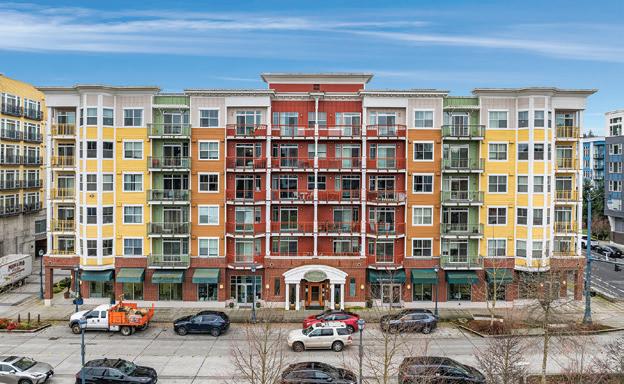
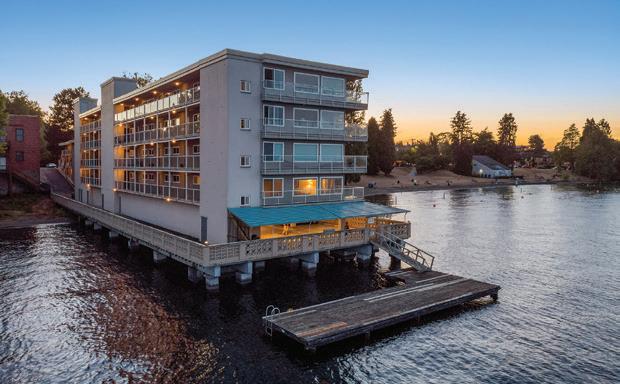


























By Brett Davis The Center Square
The good news: Washington state is expecting a $54 million increase in anticipated revenue for the remainder of the current 2023-2025 budget cycle. The bad news: Revenue for the 2025-2027 and 2027-2029 budget cycles are down $479 million and $420 million, respectively, from the previous forecast in November.
That translates into a total projected revenue drop of $845 million, or 0.6%, over the state’s four-year budget outlook.
“We expect that we’ll probably be running lower balances going forward now, given the tough budget situation that we’re in, so it’s really a story about the balances; we expect the balance of funds to be lower,” Dave Reich, executive director of the Economic and Revenue Forecast Council, told the group at its Tuesday meeting.
Lawmakers will use Tuesday’s forecast to help craft an operating budget for the upcoming 2025-2027 biennium, a potentially daunting task given a projected fouryear budget shortfall.
Majority party Democrats
have largely settled on a $12 billion figure during the current session. Republicans say numbers from nonpartisan staff indicate the shortfall is expected to be $6.7 billion over the next four years.
Lawmakers responded to the ERFC report shortly after the meeting.
“Today’s revenue forecast shows a modest decline in projected revenue, which is what we expected,” Senate Ways & Means Chair June Robinson, D-Everett, said in a news release. “While it doesn’t change the broader fiscal challenges we face, it reinforces the need for a balanced and sustainable approach as we finalize the 2025-27 operating budget.



“Throughout this process, we have been focused on making thoughtful, strategic decisions that protect essential services and put the state on a stronger financial footing. The proposal we
From page 1 and Madrona.

release next week will reflect that commitment, ensuring stability now and in the years ahead.”
According to a budget leader for Senate Republicans, the state needs to limit spending and avoid new taxes.
“Even with today’s forecast, the state expects to have $4.5 billion more over the next two years, so the sky is not falling,” said Sen. Chris Gildon, R-Puyallup, in a news release. “Still, our
As of March 20, 2024, there were 36 closed sales, including 30 MLSlisted properties and six off-market transactions. The average days on market was 29 days, with a median sales price of $1.397 million.
Fast forward to March 20, 2025, and we see 27 closed sales (23 listed and four off-market).
The average DOM has increased significantly to 69 days, partly influenced by two properties that lingered on the market for over 300 days before selling. However, the average sales price has surged to $1.84 million.
But is this sharp increase in pricing reflective of an actual marketwide appreciation? Not entirely.




This year’s numbers were skewed by three luxury sales exceeding $3 million, with two surpassing $4 million. In contrast, 2024's highest sale at this time was $2.5 million. This demonstrates how just a few high-end sales can shift the averages in a relatively small market segment.
MORE LISTINGS, MORE SALES — SPRING SURGE IN ACTION
If you've
chief economist repeatedly cautioned us to expect slow revenue growth. Legislative budget writers should take heed and show restraint going forward, especially with the uncertainty about actions at the federal level that could affect our situation.”
He went on to say, “The smart approach is to avoid new and higher taxes, limit new spending to core priorities like K-12 and public safety, preserve social services, and protect the rainy-day
noticed more "For Sale" signs appearing around the neighborhood, you're not alone. Spring traditionally brings an influx of listings, and this year is no exception. But what’s particularly interesting is the uptick in pending sales — currently sitting at 13, positioning us for a higher April closing volume than in previous months.
The average DOM for pending sales sits at 52 days, slightly shorter than the 69-day average for closed sales but still notably longer than the 29-day average from last year. This raises the question — why are homes taking longer to sell? While several factors are at play, one key element is pricing.
Over the past seven days, NWMLS recorded 2,230 new listings but also 1,100 price reductions — meaning nearly half of all new listings had to adjust their pricing to attract buyers. This serves as a crucial reminder for sellers: pricing your home competitively from the start is essential in today’s market.
If you're considering selling your home this spring, preparation is key. The usual advice applies — declutter, refresh with neutral paint, stage strategically, and enhance curb appeal — but equally important is selecting the right price.
While some homes are still receiving multiple offers, these tend to be in lower price brackets or possess broad appeal that attracts numerous buyers. In fact, multiple-offer situations are down 4% compared to last year.
So, how do you determine the
fund. Our $ave Washington budget does all of that.”
Earlier this month, Senate Republicans unveiled a budget proposal they say closes the budget shortfall without raising taxes or dipping into the state’s rainy-day fund.
The $75.6 billion plan includes a 5% spending hike for things like increased K-12 funding, 1,800 new higher-education positions and public safety enhancements.
best price for your home? A comparative market analysis conducted by a real estate professional can provide valuable insights based on recent closed sales.
However, understanding active listings — your competition — is just as important. While these active listings don't set market value, they do influence buyer perception and can impact how quickly (or slowly) your home sells.
And don’t just view the active listings on-line. Take advantage of open houses and tour them to better educate yourself not only on where your home should land in terms of price, but also what should be done to prepare your home to compete with other active listings.
I firmly believe pricing should be a collaborative decision between agent and seller. The more informed you are, the better aligned you and your agent will be in presenting your home competitively.
If you're curious about your home's current market value or what steps to take to ensure a successful sale, I’d be happy to offer a complimentary consultation. Whether you're thinking about selling now, later, or simply staying informed, I’m here to help. Let’s stay connected as we navigate the 2025 real estate market together!
Lisa Turnure is broker, global luxury ambassador at Coldwell Banker Realty. Reach her at 206-919-6605 or Lisa.turnure@ cbrealty.com.
By Spencer Pauley
The Center Square
The Seattle City Council has approved a bill to allow residential housing near Seattle’s professional sports venues despite pushback from council members.
Council Bill 120933 amends the city’s land use code to allow for workforce housing in the Stadium Transition Area Overlay District, which encompasses Lumen Field and T-Mobile Park.
The district was established with the intention to provide a safe pedestrian environment for people attending events, while minimizing conflicts with industrial uses that occur in the SODO neighborhood.
In 2023, the Stadium Transition Area Overlay District was rezoned to an urban industrial zone, but unlike other urban industrial zones, most residential uses were prohibited within the district.
According to a fiscal note, the intent of the bill is to create a livelier Stadium District by allowing residential uses that serve a mix of incomes.
Council Bill 120933 received pushback from some council members, Port of Seattle workers, and from the Port of Seattle itself, which threatened legal action if the bill is approved.
“For such a progressive piece of legislation, there is an uncommon amount of opposition, at least for Seattle here,” Seattle City Council Chair and sponsor of the bill Sara Nelson said during the city council meeting on Tuesday.

Nelson said the bill will help address the city’s affordability crisis and help small businesses. Planned privately subsidized housing and workspaces will be built using 100% unionized labor.
City Councilmembers Dan Strauss and Alexis Mercedes Rinck called for the bill to be rescheduled to midJuly in order to better understand the nine new amendments to the bill that circulated within the last week and were made public on Monday. The motion was shot down by the



council in a 6-3 vote. Eight of the nine amendments were adopted.
Highlighted points from the approved amendments include limiting the total number of residential units in the Stadium Transition Area Overlay District to 990 units, stating the council’s intent to maintain industrial lands for industrial uses, and prohibiting housing in the stadium district unless indoor noise levels can be reduced to 45 decibels. Strauss was a staunch opponent of the legislation and the amendments
throughout the council meeting. He said that the package of amendments demonstrate the awareness of council members that the bill has flaws.
Strauss joked that the bill would lead to street and alley vacations as the next step. Street vacations allow property owners to petition the Seattle City Council to vacate the public’s right to use a street and return it to private property.
“I was going to bring it up as a joke that the next thing that we


would see is an alley or street vacation – the fact that it is already being considered, it’s already being discussed –” Strauss said before Nelson interjected that he was impugning the motives of other city council members.
The final vote was 6-3 with Strauss, Mercedes-Rinck and fellow Councilmember Bob Kettle in opposition. The bill will now be sent to Seattle Mayor Bruce Harrell for his signature. Once signed into law, it becomes effective in 30 days.















